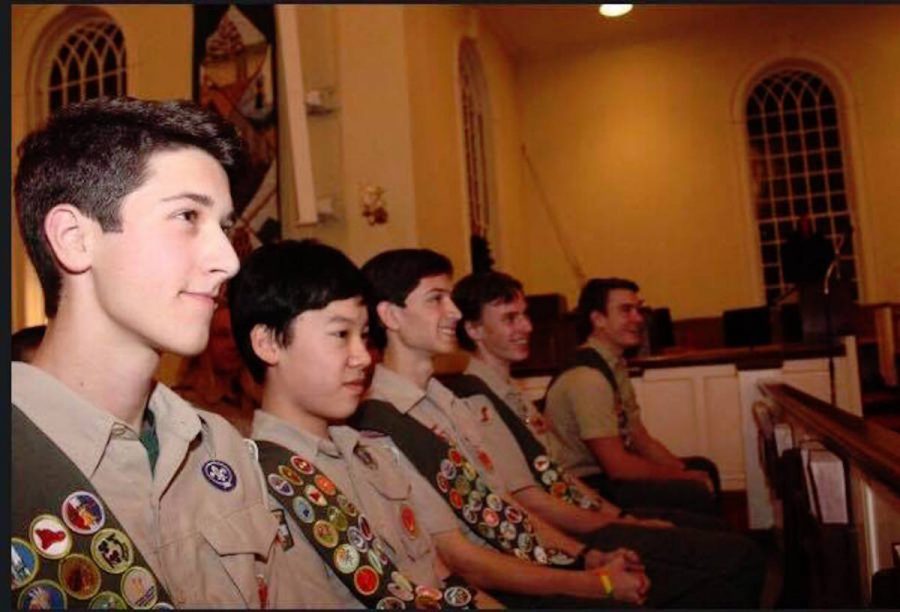Whitman community disappointed with new Boy Scouts policy
Reed Fedowitz (’17) and other Boy Scouts sit in a meeting. Many students, more male and female, disagree with the new rule allowing girls to become Eagle Scouts. Photo courtesy Michael Schecter.
November 1, 2017
The Boy Scouts of America will allow girls to become Eagle Scouts—the highest rank a Boy Scout can achieve—an Oct. 11 rule that converts it to a co-ed program in an attempt to make it easier for families to manage their children’s activities.
Prior to this change, girls could only participate in select BSA programs, including Venture Crew, a co-ed program for ages 15 and up.
BSA has defended their decision by asserting that it’s more inclusive and easier for parents this way.
“The place of focus here is on the family,” National Capitol Area Boy Scouts Chief Communications Officer Aaron Chusid said. “If they have multiple children, it’s difficult to get them to multiple locations for their activities, so single point of entry makes it easier for everyone to participate as a single unit.”
Still, some current Boy Scouts feel that the Girl Scouts already offer a valid alternative—there is already a Girl Scout rank equivalent to Eagle Scout in the Gold Award.
“Personally, I don’t think it’s a good idea, and if a girl wants to do something like Boy Scouts, she has other options, like Girl Scouts,” Whitman Eagle Scout Peter Montgomery said.
Montgomery also mentioned potential logistical concerns.
“We currently have a buddy system, where you have two buddies with you wherever you go, and I’m not sure how that would work with two genders,” Montgomery said. “I’m not sure we’d even have enough girls to balance out with the number of boys. Plus, it’s kind of nice to be able to hang out with just guys while you’re camping and have guy talk.”
For those who agree with Montgomery, BSA has already begun to offer solutions.
“This isn’t a true co-ed program. The model that’s been suggested for Cub Scouts is one den [group] at each age level, one for boys and one for girls,” Chusid said. “I suspect we will see the same model for the older programs, with separate patrols for boys and girls so they can do single-gender activities and then when possible, the whole troop can come together from time to time.”
Girl Scouts of America publicly criticized the new policy and offered theories that the new policy is just a business move instead of a genuine desire to help young girls grow.
“I’m of the opinion that this is a marketing ploy,” former Girl Scout Julia Sienkiewicz (‘15) said. “This is about their declining enrollment. I’m afraid that resources and potential scouts will be siphoned off from Girl Scouts, and that they will be even more overlooked because of this.”
But former Girl Scout Carter Witt doesn’t see the decision as a negative one.
“Girl Scouts and Boy Scouts are just very different,” Witt said. “The projects, awards and activities for each are really different, and I don’t think girls being in Boy Scouts will take anything away because the girls may just be more interested in outdoor Boy Scouts activities.”










